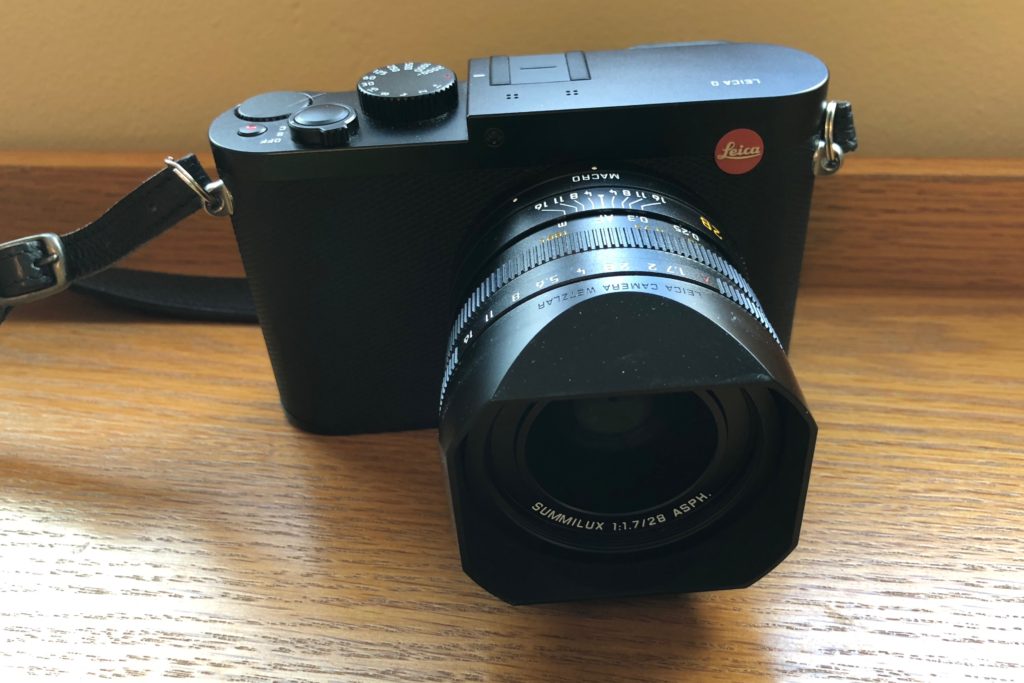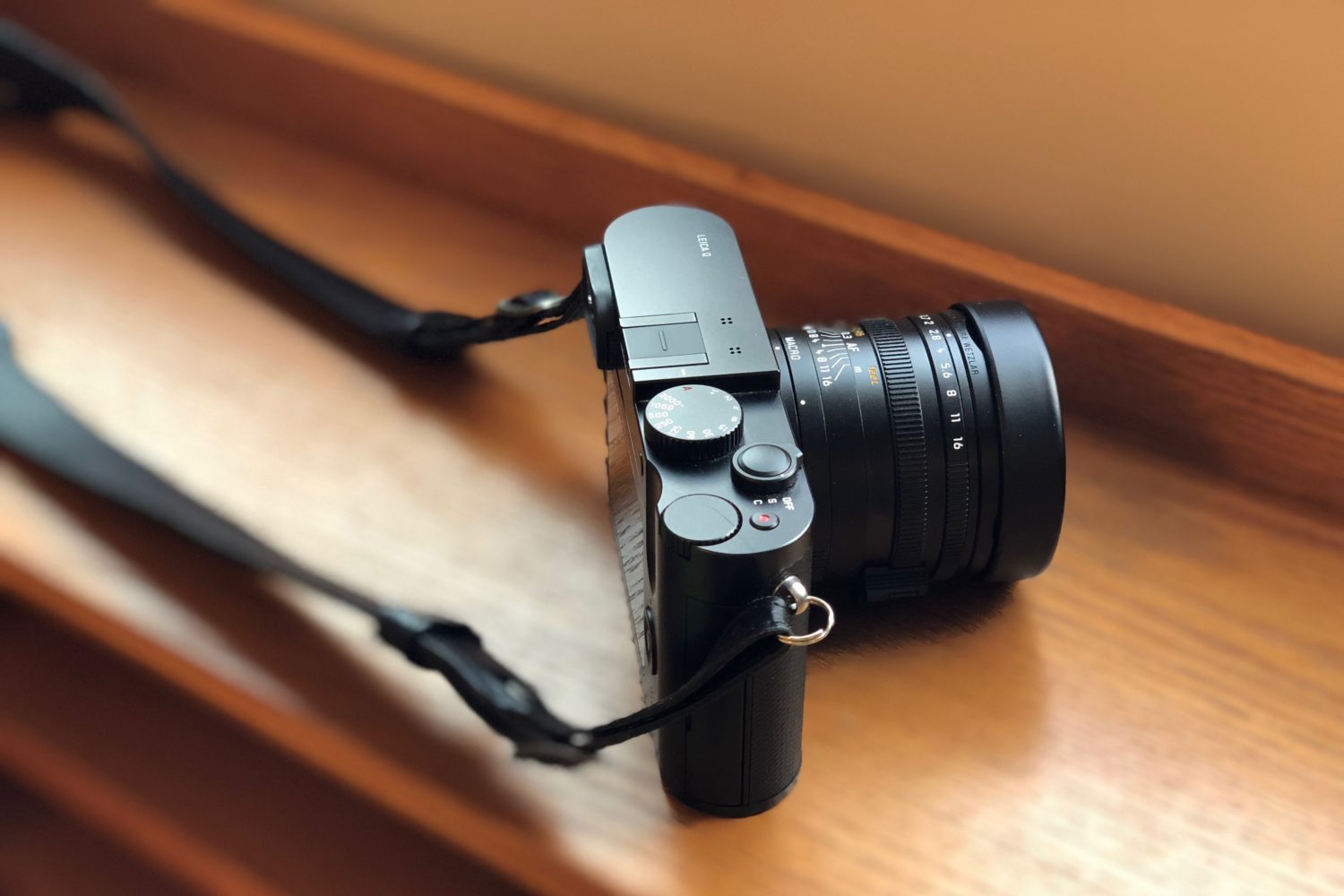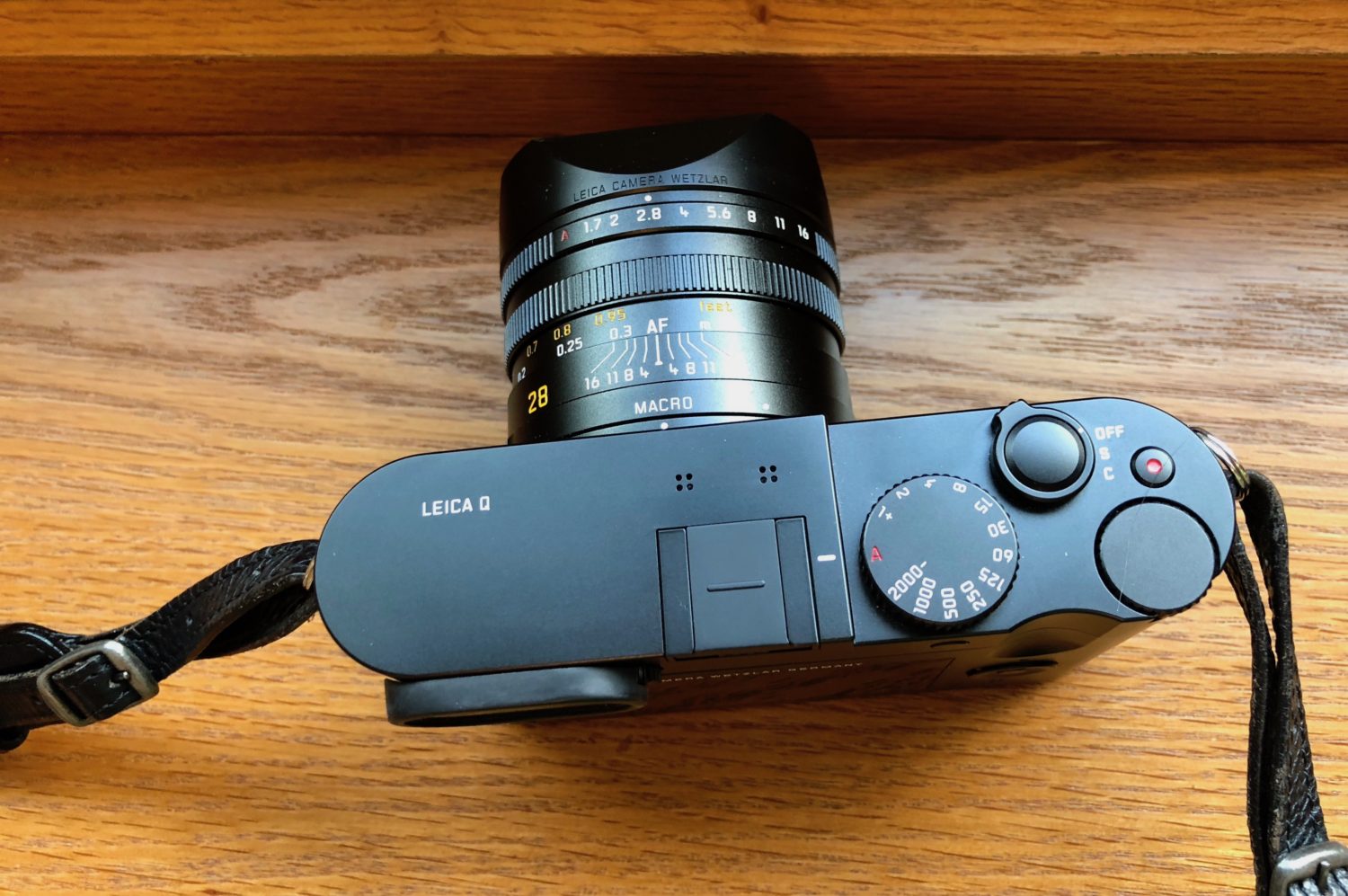I am, on a good day, an adequate amateur photographer. My technique isn’t professional, nor do I have an artisan’s astute eye for composition. I am okay in every measurable, meaningful way. But what I lack in skill, I compensate with enthusiasm.
Photography is fun for me—and I am an original digital shooter, going back 20 years. Anyone remember the crappy Sony Mavica that saved photos to floppy disks? I owned one, in the late 1990s. My first camera of consequence was the Canon PowerShot S20, the first commercially available digital compact to top 3 megapixels; I used it to document Steve Jobs introducing Apple Store, in May 2001.
My first dSLR was the Digital Rebel. I’ve used or owned cameras from Canon, Fujifilm, Kodak, Leica, Nikon, Olympus, Panasonic, Sigma, and Sony. None improved my technique; that was more a consequence of practice. Features—bells and whistles—are no substitute for a good eye. I most recently shot Fuji, because of compact size, high IQ (image quality), and manual control dials.
Last Winter when looking over my photos, I could see consistent patterns. My best work is with a Prime lens (e.g. fixed focal-length). Two kits produced the most pleasing photos: Canon EOS 20D and attached EF 135mm f/2 USM lens; Leica X1. The Canon kit brought street photography from a distance close in and (deceptively) intimate, when cropping. The Leica, and its fixed 24mm f/2.8 lens, made intimate portraits through proximity to the subject.
The X1 shots shared an indescribable look that pleased my eyes. Consistency, with respect to IQ, color, contrast, and cleanness from artificats, was evident among the photos. I also enjoyed using the high-end compact more than any other. More importantly, I regretted selling it, during Christmas season seven years ago.
Love in Hands
In March 2017, I started researching Leica cameras, with no expectation to buy one (mainly for budgetary reasons). But a model intrigued, being mirrorless, and packing fixed lens (28mm f/1.7); full-frame sensor (rather than APS-C); manual control dials; fast and accurate autofocus; and dedicated manual focus. On May 6, a Sunday, I drove over to Nelson Photo, which is a local Leica dealer, and asked to see the Q.
The salesman presented the demo unit and encouraged me to try it out, and I liked the camera almost immediately. Photography isn’t about device features, or even technique, but relationship, finding a camera that makes you want to shoot with it—that is a joy to use. That’s how I had felt about the X1. Likewise, the Q immediately beckoned me.
There was something seemingly irrational about the appeal, in a tech climate where the next new thing—and fancy feature additions—is esteemed to always be the best choice. Leica launched the Q in mid-2015. Who buys a two year-old release? Answer: Somebody actually thinking rationally about the purchase. Benefits matter most. How a camera feels, how comfortable it is to use—these are immeasurable benefits that matter.
Snag: The store sold two units that week and had none in stock. No problem. You pay, the dealer orders another, and you walk out with a loaner—the demo unit I already had in hand. My camera wouldn’t be available for 25 days. But the loaner made waiting lots easier and afforded time for Leica Q and I to become acquainted.
Stolen Heart
To be clear, I wasn’t dissatisfied with my two other digicams, the Fuji X100F and X-T1. Both are exceptionally fine, mirrorless cameras. But I couldn’t afford to keep three, not with the Leica’s bulky price. So I sold each Fuji, and some other gear, including three lenses, to cover the Q’s cost while waiting for mine to arrive from Germany. That was after a few days use, seeing that the Leica could be shooter enough for me.
A fixed-lens camera defies convention, which is why the selection of models available from major manufacturers is so few. The easy, reasonably affordable, single focal-length option is a smartphone. Even so, Fuji, Ricoh, Sigma, and Sony all produce digicams of similar non-interchangeable lens limitation. But the combination of features and benefits derived from the right ergonomics and Prime can make the fixed-lens mirrorless an outstanding choice for street photography. That said, most enthusiasts or professionals would use this kind of kit as their secondary camera. I am atypical for making it primary—and only.
I never considered a Leica rangefinder, like the M10. Cost is prohibitive, and I prefer the option of auto and manual focus, rather than just the latter. I did seriously wonder about keeping the X-T1 or moving up to the X-T2. Both offer dials for all major functions, including exposure compensation and ISO. But with the older camera, the bright San Diego sun consistently made seeing the electronic viewfinder (EVF) next to impossible. That remained a problem, even with larger eyecup attached.
The X100F has a hybrid viewfinder, with optical option, that solves the washout problem, and conceptually is closer to Q in purpose. I enjoyed shooting both but Leica stole my heart from Fuji, which wasn’t easy. I loved using the X100F.
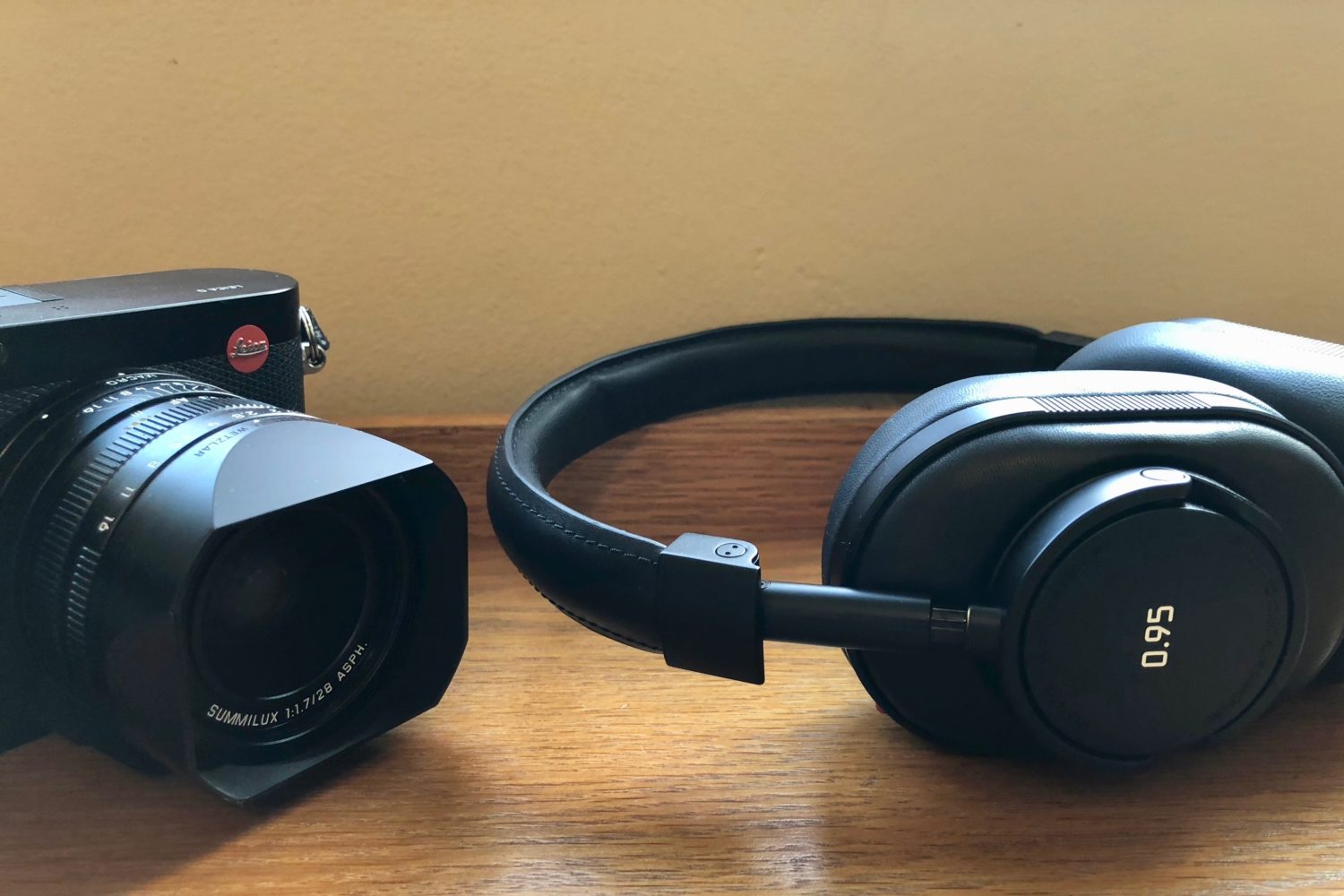
Leica Q and matching Master & Dynamic MW60 headphones
Whom and Why
Before continuing, let’s dispense with whom Leica Q isn’t best choice:
- Everyone who needs to use more than one lens.
- Photographers looking for flip rear LCD screen or water-sealed body.
- Budget-minded shoppers who don’t mind lugging around a larger body and lens(es).
- Anyone who hears terms like aperture, exposure compensation, or ISO and goes “Huh?”
- Shooters who don’t want to be locked into wide-angle view; the lens is 28mm film equivalent.
- Videographers wanting 4K; the Leica tops out at 1080P (and even then isn’t necessarily better than iPhone).
By contrast, the Leica could be right if you want to:
- Solely shoot a Prime lens; you are the telephoto.
- Get fast, accurate auto-focus and superior image quality.
- Have fully manual Macro and focus options that are sensible.
- Use a compact camera with manual dials and full-frame sensor.
In November 2017, or about seven months after I started using Leica Q, National Geographic picked the “Top 10 Cameras for Travelers“. The X-T2 begins the list, as the “best model overall”. Two fixed-lens cameras join the others: X100F and the Q. Tom O’Brien sums up top-line benefits better than I could:
For the traveler who demands the best in a camera in regards to build quality and optical excellence they need not look farther than the Leica Q. The Leica Q is a German engineered and built full frame, fixed-lens camera. Leica products from the Wetzlar plant have a heritage performance and quality. The camera is remarkably simple to operate, with little in the way of bells and whistles but from this we are presented a camera that is nimble and quick, allowing the photographer to focus on composition and emotion. Sporting a quality EVF the camera hails to its historic roots of the heralded M series of film and digital rangefinder cameras. I had a fantastic time with this camera; if you can handle the cost of this camera you will simply not regret your decision to own a Leica Q.
My user experience mirrors that of DL Byron, writing in December 2017 for Digital Photo Pro magazine: “The Leicas are not the fastest, don’t have the highest-resolution sensor, or really any of the normal stuff that’s marketed to camera buyers. Instead, they immerse you in the process of taking a photo—and, that process can be very rewarding”.

“French Resistance” f/5.6, ISO 200, 1/60 sec, 28mm
Some recommended reviews from people with more photographic chops than me:
- “Leica Q (Type 116) Review“, Robin Schimko
- “The Leica Q: A six-month field test“, Craig Mod
- “Leica Q Review—Going Wide“, Børge Indergaard
- “Twelve Months with the Leica Q“, Nick del Rosario
- “Leica Q Review: Nine months of adventure with my best-ever camera“, Mike Evans
This list is deliberately exclusive. Many of the best reviews are from the camera’s release year of 2015, and they are excluded (but some are quoted from herein). The five spotlighted are either more recent or reflect many months of usage.
Top-line Benefits
Leica Q, as I have previously stated about the X100F, is an acquired taste—kinda like World Market 99-percent cocoa dark chocolate. The sensory experience is satisfyingly rich but not without giving up some sweetness. The mirrorless shooter can be operated in auto-mode, but the real benefits come from adjusting dials to get what you want from each and every shot. This ain’t Hershey’s chocolate. But with the bitter bar comes robust flavor—and simplicity. Leica doesn’t overwhelm with unnecessary features. The Q presents what you need, where you would want it. Among the features and their benefits that matter to me (and hopefully to you):
1. Ergonomics. The simple, straightforward, and practical design delivers exceptional ergonomics. Little touches tell the story. For example, single- and continuous-focus modes are part of the on-off switch. That’s so hugely useful; you aren’t compelled to fudge around with the other hand to change the setting elsewhere and miss the shot. One notch-click is single, or pull one more for continuous. You’ll know when grabbing the camera, if you want to capture action. I will discuss other ergonomic benefits, separately (see numbers 7, 8, 9, 10).
2. Amazing balance. In good design, balance is everything—and Leica Q delivers in the two ways that matter: How the device feels/handles and the way features combine together—the aforementioned ergonomics.
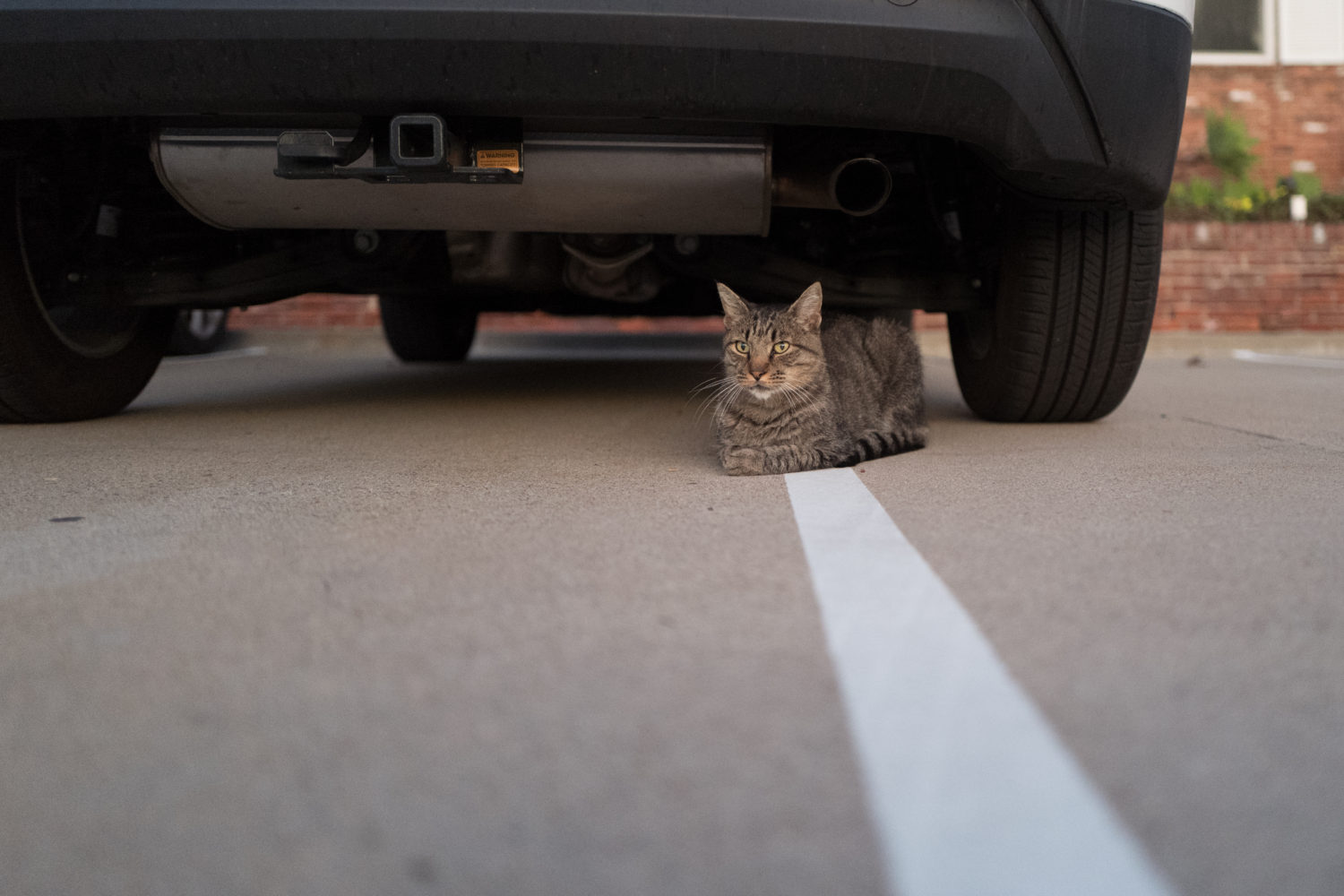
“Monkey” f/1.7, 1/125 sec, ISO 3200, 28mm
Physical balance is hugely important to digital cameras, because of how they are handled. Leica Q is remarkably balanced, and surprisingly so, since it isn’t a small compact—mostly because of the size of the lens. Overall dimensions: 130 x 80 x 93 mm (5.12 x 3.15 x 3.66 inches). For comparison, the X100F is 126.5 x 52.4 x 74.8mm (4.98 x 2.06 x 2.94 inches).
When I picked up Leica Q in the store, it immediately felt good; proper balance is major reason. Heft is significant from the magnesium alloy body and the lens, which extends, with hood attached, about 65mm (2.6 inches) from the body (figure is based on my own inexact measurements). The kit weighs 640 grams (1.41 pounds); for comparison, the X100F is 1.03 pounds.
3. Full-frame sensor. Physical size is 36mm x 24mm—that’s 35mm format, or film equivalent. Images coming off the sensor are 24 megapixels (measuring 6,000 x 4,000 pixels). For anyone counting them (and you shouldn’t), number of megapixels matters much less than does sensor size.
Photos are artifact-free across the entire range. The captured detail and vibrancy of the colors are breathtaking. This is a super IQ shooter, but the sensor is only part of the reason why.
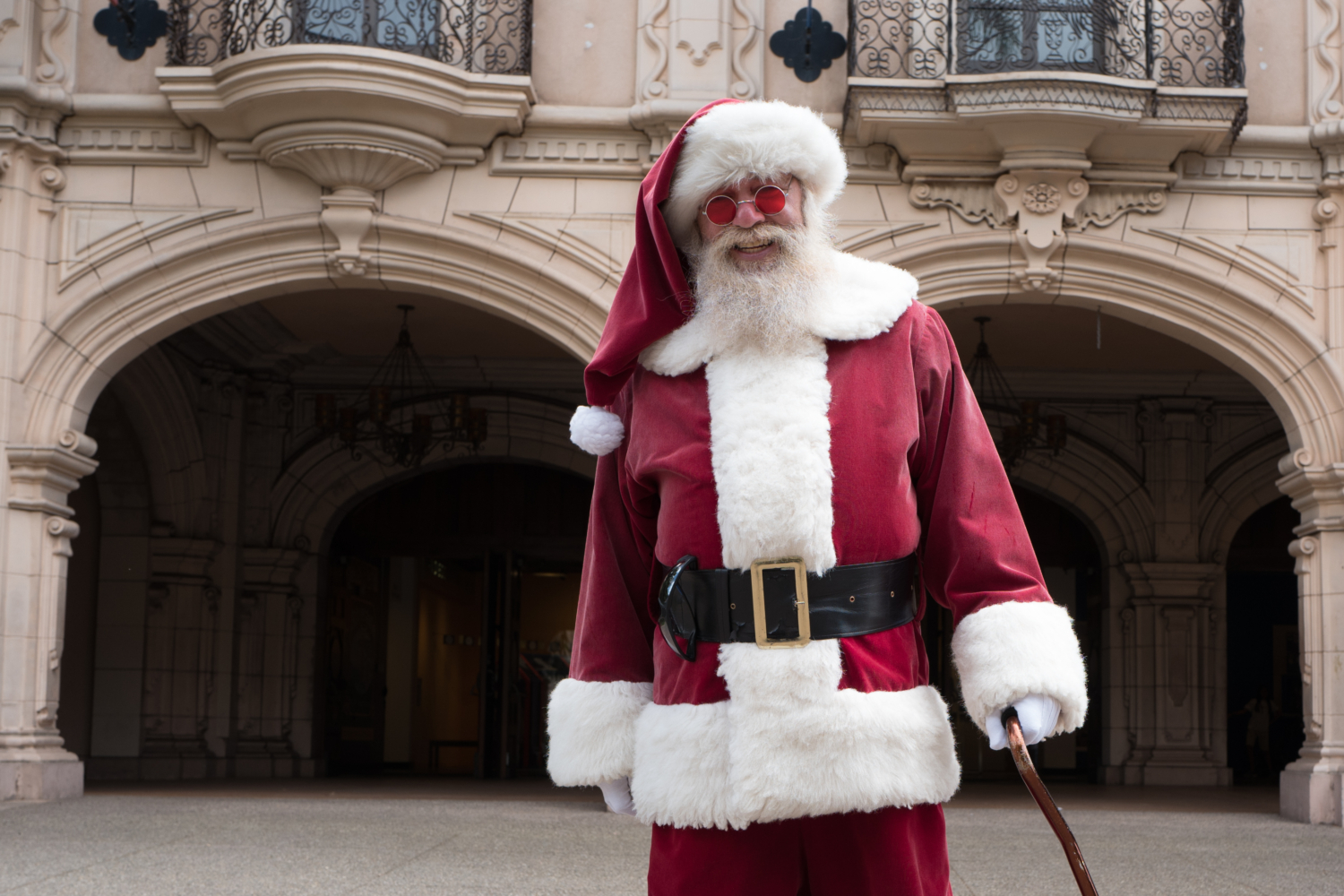
“Summer Santa” f/5.6, ISO 100, 1/160 sec, 28mm (95% crop)
4. Fixed lens. A sensor is only as good as the lens, and the Q’s f/1.7 Summilux delivers super sharpness across the focal range. This is a prime’s Prime that gives great clarity regardless of shooting conditions. I am simply amazed.
One advantage of a Prime lens matched with a full-frame sensor: There is so much captured clarity that you can close-crop without losing detail. That affords some of a telephoto’s get-in-close benefits without imposing the typically, accompanying photographic aberrations caused by the mechanical elements.
5. Wide-angle perspective. The 28mm, which is film equivalent, won’t win over everyone. But, hey, if you shoot anything with an iPhone, its puny sensor also puts out 28mm film equivalent. The perspective should be familiar. Honestly, I needed to adapt, but it wasn’t as difficult as expected.
If you’re shooting people, particularly on the street, the 28mm lens demands getting in closer to the subject. This is an intimate street shooter. A camera with attached telephoto can create sense of intimacy but keep you discreetly away. Leica Q wants you to close the distance with the subject.
6. Electronic viewfinder. When given the choice between an EVF or optical viewfinder, I invariably would choose the latter option. But few mirrorless cameras offer it. Exceptions are the Fuji X100 and X-Pro series, which pack both. User can choose digital or optical VF and quickly interchange between them.
As previously mentioned, I had trouble seeing Fuji EVFs in the San Diego sunlight. Leica Q’s 3.68megapixel LCOS EVF is plenty bright and viewable, howerever, and satisfying. More importantly, digital rendering is smooth. Meaning: No troublesome lag. What you see is what you get.
In summer 2016, because of cataracts, I had the natural lenses in my eyes replaced with implants. My distance vision is excellent, but reading glasses are needed. I can completely see Leica Q’s EVF contents with or without eyeglasses, which is convenient and helpful when wearing sunglasses. I can get them out of the way and still shoot.
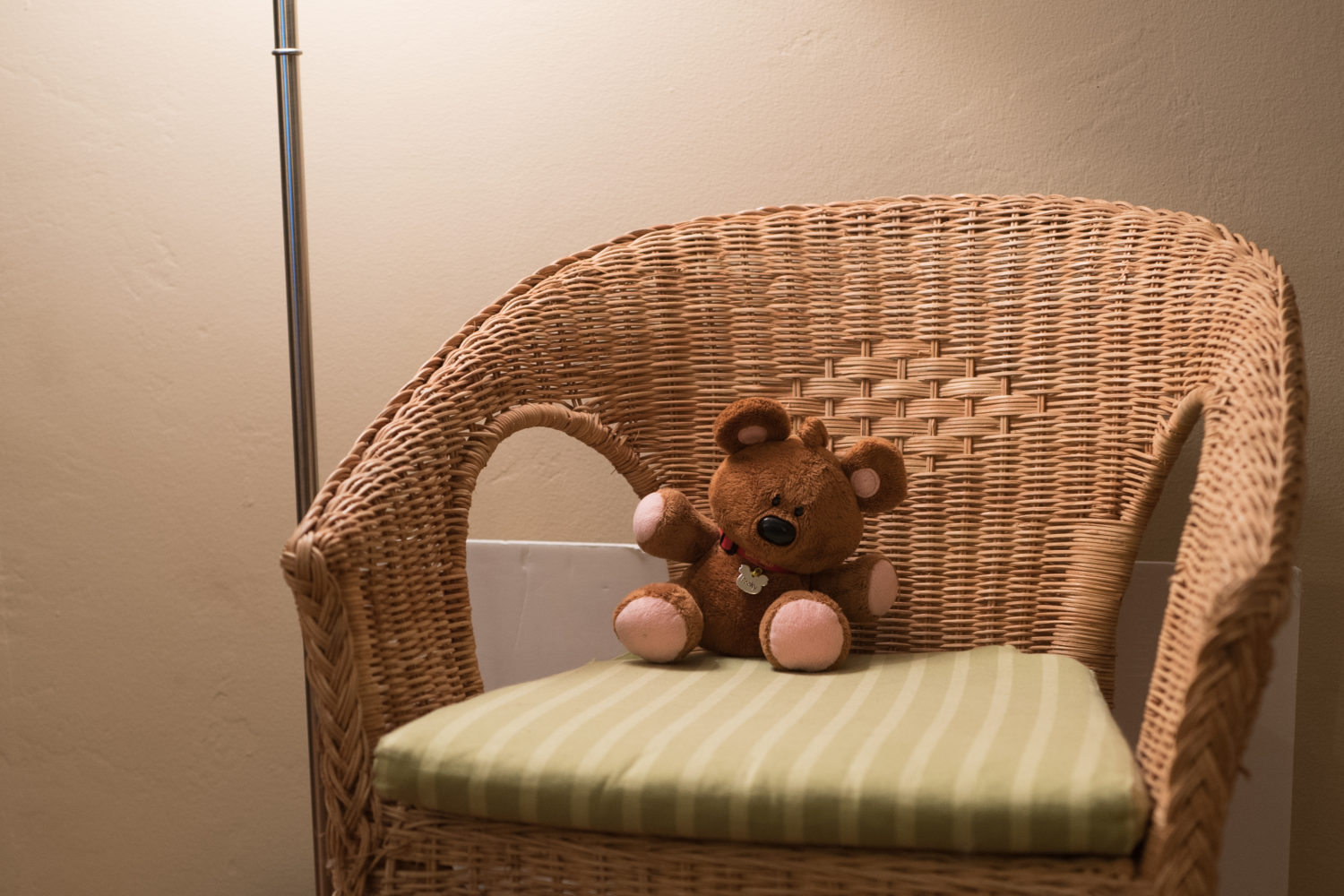
“Pooky” f/2, ISO 500, 1/60 sec, 28mm (manual focus, 100% crop)
7. Fast, accurate auto-focus. Every time I use Leica Q, the auto-focus amazes me. It is super speedy and precise. I have fewer bad captures with this camera than any other, and that includes when shooting in low-light situations.
One word describes bringing together the sensor, lens, auto-focus, and overall consistency of colors and contrast among the photos: Reliability. Leica Q is the most reliable camera that I have ever used. As such, I can trust that most images will come out as my eyes see them and that nearly all will be usable. Trust isn’t a word often applied to digital cameras, but it must to Leica Q. Trust/reliability is the single biggest benefit that wouldn’t be if not for precision of the design and ergonomics and how these and other attributes balance together.
This quality, when married to the 28mm perspective, means that I can focus on composition, whether thinking about the shot in the moment or how to crop-in later on.
8. Dedicated dials. Fuji and Leica share in common ergonomics that emphasize manual controls. Leica Q has dedicated dials for shutter speed (on top of the body next to the power switch); the aforementioned single- and continuous-shooting modes built into the on-off button; and f/1.7-f/16 aperture ring around the lens barrel.
There is no ISO dial, like on Fuji X series shooters (such as the X-Pro2 and X-T2). The Q instead has an ISO button to the left of the rear LCD screen that brings up an on-screen menu for changing the number. I am more inclined to just leave the camera in auto-ISO mode than I was one of the Fujis.
Exposure compensation is adjusted from an unmarked dial (because it can serve other functions) behind the on-off switch. The dial is easily manipulated with the right thumb, when shooting.

“Pirate” f/4, ISO 100, 1/200 sec, 28mm (close-crop)
9. Manual focus. The dedicated controls don’t stop there. Borrowing design heritage from Leica rangefinders, the Q provides pinpoint accurate manual focus from a ring around the lens barrel. (There are three rings. Aperture is closest to the glass and Macro to the body.) Manual focus is controlled from a knob, with a notch that when pressed unlocks the feature. Turning the knob magnifies the subject object in the viewfinder so that you can fine-tune the focus before pressing the shutter. Focus peaking aids the eye’s perception by visually shimmering around the subject.
When I have the most time to compose a shot or when capturing crowded scenes where auto-focus might lock onto something not wanted, I will go manual. The value of manually focusing when shooting fast aperture cannot be overstated. The 28mm f/1.7 lens gives great bokeh, but with shallow depth of field the focal point must be just right—especially if you plan to close-crop, in post production.
Leica rangefinder photographers are accustomed to manually focusing, because there is no other option. I see the appeal to them. The more often I use manual focus, the less likely I am to go auto. Auto-focus increasingly is for the immediate moment that I don’t want to miss. Manual is for more deliberate, thoughtful composition. But, as I get more proficient, manual focus’ appeal increases.
10. Meaningful Macro. Leica Q puts you in control of closeups. A ring around the lens barrel activates the feature; you can get as close as 17cm to the object. I typically use it with manual focus for precision, but auto works well, too. Macro mode is a joy to use and functions like no other camera I have ever used.
11. Framing selector. This isn’t an option I use often, but it is handy—and I suspect that many people struggling with 28mm being too wide would welcome the fallback choice(s). On the back of the camera below the shutter speed dial—easily and comfortably reachable with thumb when looking through the EVF—is a button that changes the frame lines to 35mm or 50mm perspective. Think of it as a pseudo-digital zoom by way of cropping the field of view (also reducing size of the file).
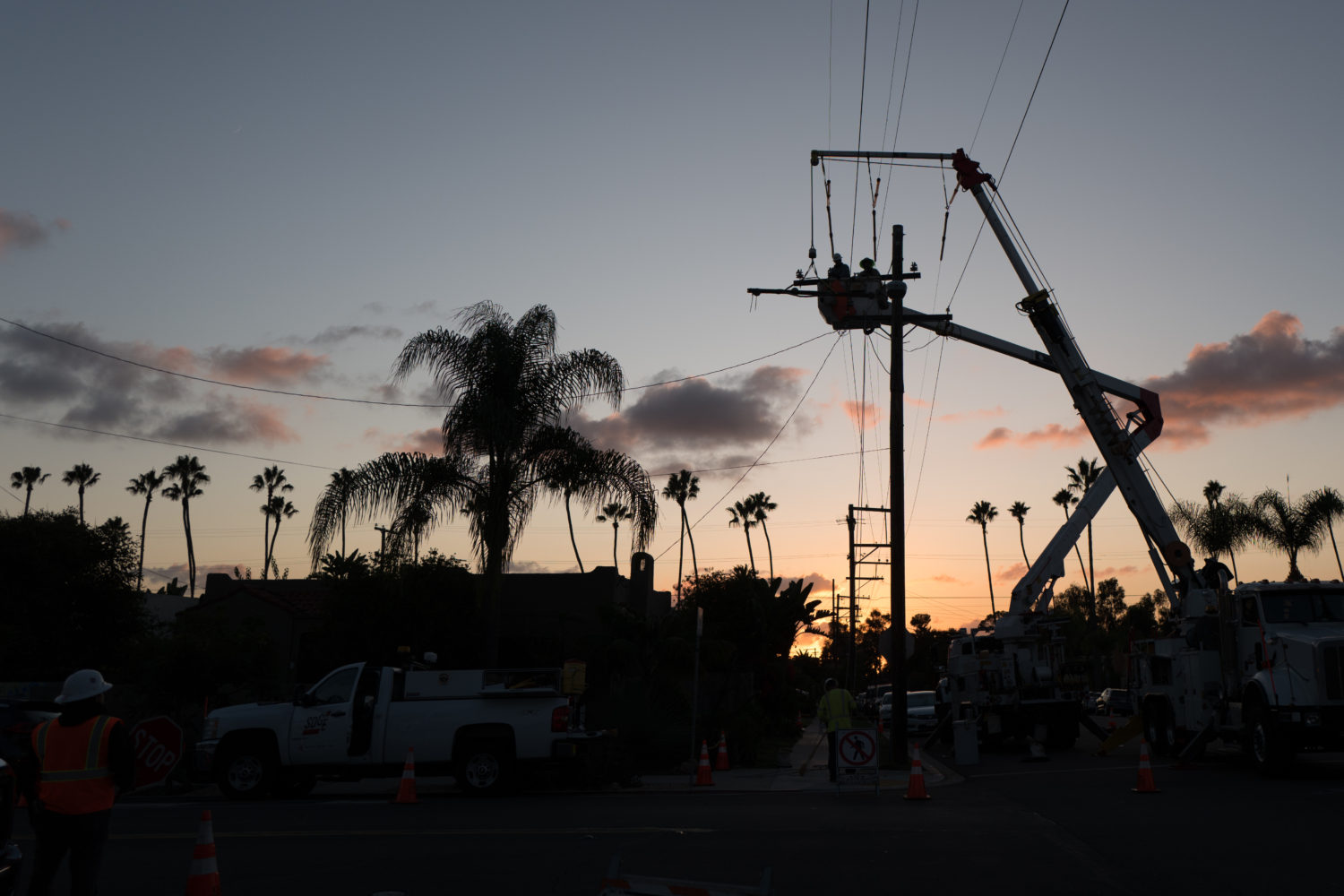
“Electric Sunset” f/2, ISO 100, 1/2000 sec. 28mm
12. High ISO. I don’t use flash. Ever. If there isn’t enough available light, I don’t make the moment. As such, low-light-shooting capability is a top priority—and Leica Q comfortably delivers up to about 10,000. But with noise-reduction applied post-production, even photos shot at ISO 25,000 are usable. I haven’t tried the max of 50,000.
13. Optical Image Stabilization. The feature is common among many cameras but, not as I understand, from Leicas—like auto-focus. The OIS built into the lens gives you about 3-stops of leeway, which is a great utility for a camera that focuses accurately in low light, while producing usable photos at high ISO.
The feature’s benefits circle back to the aforementioned topic of physical balance. Leica Q is hefty for a fixed-lens mirrorless compact, which risks ruined images from camera shake. My number of shaken images from this phenomenon in about nine months using the Q: None. I kid you not. The amazing physical balance coupled to OIS produces sharp images easily at 1/8 sec. Granted, your subject should be still.
14. Silent shutter. Like the Fuji X100 series, Leica Q serves up a rare treat: Leaf shutter, which by design must be part of the lens. For street photographers, the feature is one of the primary advantages shooting with a fixed-lens camera, because leaf shutters are nearly silent—for Leica Q, through 1/2000 sec (for faster shutter speeds, the Q is truly silent; digital shutter takes over).
“Leica Q’s leaf shutter is one of the quietest shutter I’ve ever used”, Richard Wong writes in his review of the camera. “Street photographers would love the Q as the super quiet shutter combined with the black understate body make it perfect for capturing some sneaky stealthy street photos”. Let me once again use the “I” word, intimate, and add another: Paparazzi.
15. Flash sync. If, unlike me, you use flash, the leaf shutter enables flash-sync up to 1/2000 sec. However, Leica Q does not come with built-in flash (like the X100F) or attachable one (like the X-T2). You will need your own for the hot shoe.

“Two Broads” f/5.6, ISO 100, 1/250 sec (edited for taste)
16. Lens cap. Simply stated: The thing fits over the attached lens hood, which allows me to keep on the hood all the time.
17. RAW format. Like other Leicas, the Q saves files as JPEG or Adobe’s DNG (Digital Negative) format—or both together. I can open and/or manipulate DNG in more applications and on more devices than the typical camera manufacturers’ RAW files; I typically only shoot RAW. Ubiquity and compatibly mean something. Save-to-DNG-only option has been available on Leica Q since release of Firmware Update 2.
There also is a presumption, whether or not true, that there should be some post-production benefits to DNG when editing with Adobe products (like Lightroom Classic CC).
18. Rear thumb indent. Many photographers will want a hand-grip, but I find Leica’s design choice to be most appropriate. A more traditional hand-grip would diminish the camera’s aesthetic charms. But if you must have one, the German manufacturer has your back—for $125.
The rear thumb indent doesn’t look like much to grab but it works for me. The camera has never once slipped from my fingers. Even if there was such mishap, Leica Q is always attached to the Hard Graft Atelier Hang Camera Strap that I got for Christmas 2015.
Nitpicks
For all the ways Leica Q satisfies, some shortcomings make an imperfect kit.
- Video recording disappoints, particularly considering that photography is spectacular.
- The lens cap tends to become loose over time, meaning it no longer snuggly fits and can fall off.
- The touchscreen is okay, which makes it sorely out of place on a camera where so much attention is given to minute ergonomic details.
- The rear-LCD screen doesn’t flip up, and should, thinking of the Q as a street camera and opportunities shooting from the hip would present.
- The diopter knob for the EVF too easily is knocked out of place. Particularly before going out street shooting, I feel obliged to check that the viewfinder is readable and to make any needed adjustments.
- The Exposure Compensation dial switches to adjusting shutter speed when you manually choose your own rather than shoot auto. I see benefits of both methods but would prefer something more flexible.
- Weather sealing makes so much sense for a fixed-lens camera, particularly one that is rugged and capable of taking hard knocks in the field. But, alas, you want to be mindful of serious rain or snow when using Leica Q.
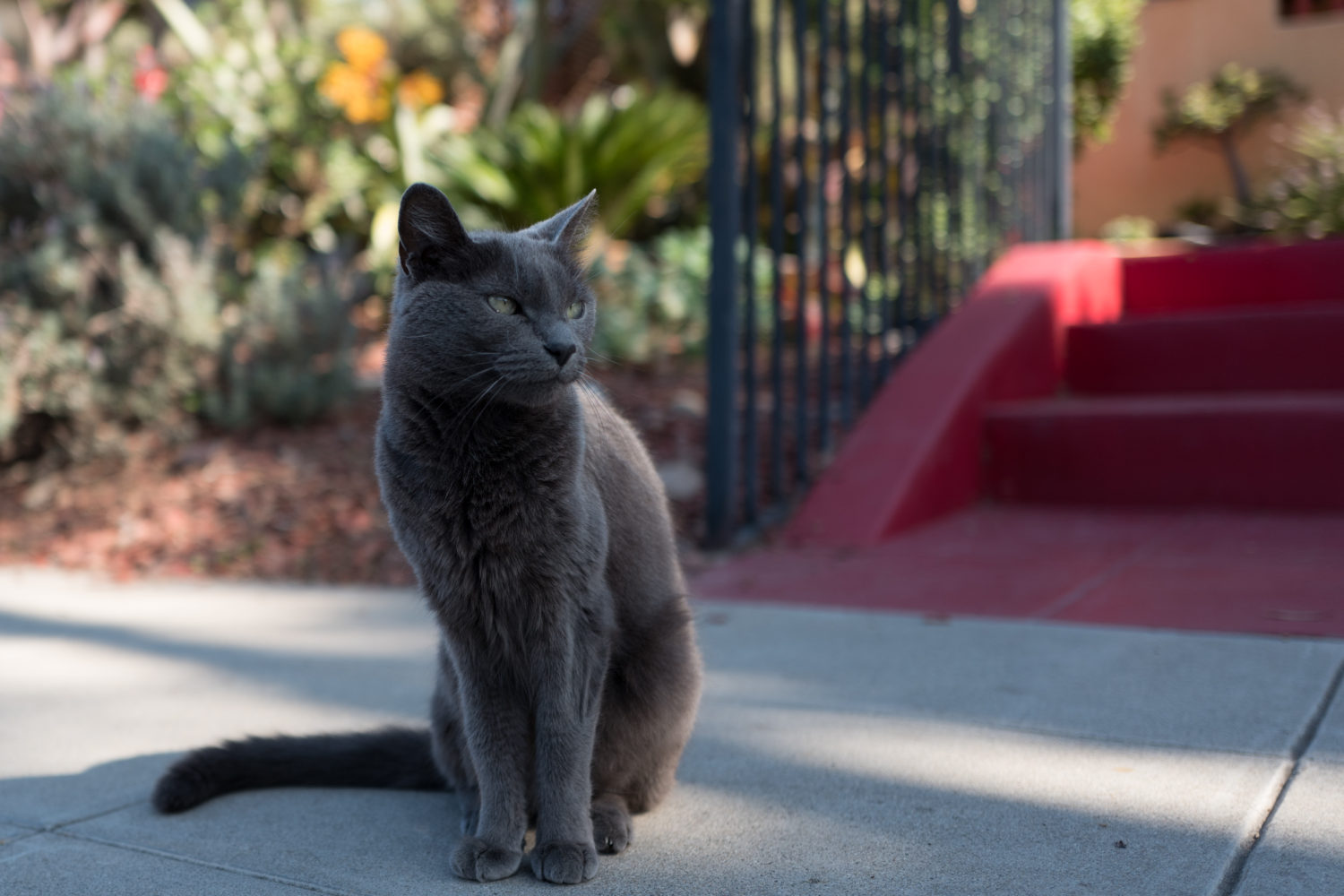
“Maxine” f/2, ISO 100, 1/1250 sec, 28mm
And Finally…
Quickly, some features I skipped over, because I rarely or never use them:
- Wireless capabilities. The Q supports WiFi and NFC, and Leica makes a supporting app.
- Customizable buttons. Several can be assigned new functions, such as the one for 35mm or 50mm framing.
- Menu system. Leica Q’s menu system is among the best I’ve used. But relying on manual controls, I rarely need to access it.
- Video recording button. You will find it conveniently placed to the right of the on-off switch. The thing would be handy if Leica Q was anywhere as good shooting videos as photos; it’s not.
The 2015-release Leica Q is designated Typ 116. Two color variants can be purchased, but at different prices: Black anodized—the one I own—for $4,250; silver anodized for $4,495. Titanium grey is no longer available.
Leica Q isn’t for everyone, and likely isn’t for most people. The camera is costly but could save you money over the long run. You get one lens and won’t be tempted to purchase any more, because you can’t interchange them. The single piece of glass won’t be enough for the majority of shooters, though. That’s okay. Leica Q is a precision instrument ergonomically designed for precise photography.
I love mine. Leica Q is one of the best investments—it’s more than a purchase—that I have ever made. Yes, there are times that a zoom lens would be useful, if not necessary. But the balanced benefits and how the full-frame compact inspires me to photograph more are what matter most.
Leica Q isn’t a camera, it’s an experience.
